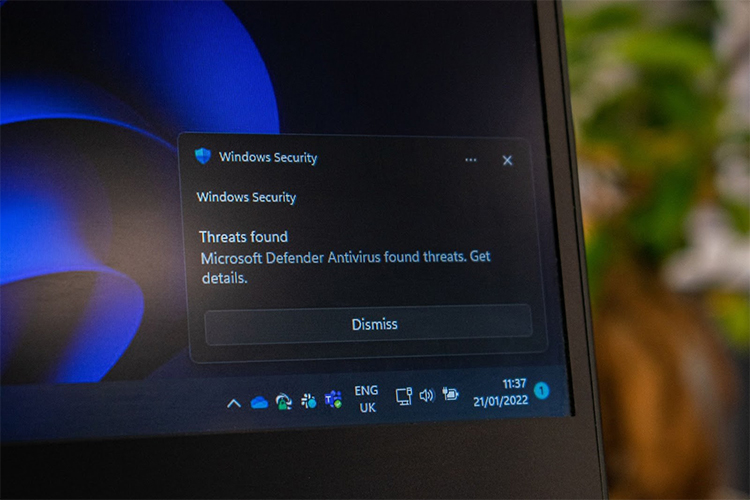High-profile data breaches that have occurred in recent years are set to increase. Multinationals that find themselves in the crosshairs invest in the best security solutions. Yet threats still slip through due to the lack of threat hunting.
In this article, we’ll discuss why threat hunting is important, what it is, and what you benefit from applying it. First, let’s make a case for threat hunting.
The Case for Threat Hunting
In a recent survey, three out of four financial services institutions reported a rise in the number of cyber threats they faced. A Cisco cybersecurity threat report (2021) found malware attacks dominated internet searches. These include cryptomining, phishing, and trojan malware.
Successful attacks remain rare in the best-secured organizations. Yet advanced cybersecurity infrastructure is no guarantee bad actors won’t break in. Such security breaches would often occur when cybercriminals exploit weak points you had overlooked or hadn’t thought were significant.
Cryptomining malware isn’t a threat many organizations think about. Yet, the spike in cryptocurrency curiosity and price means it’s a real risk. Cryptomining can deteriorate the enterprise systems’ performance and leak organizational information.
All these make the case for threat hunting. Threat hunting is a human-driven and tools-based practice. Here, you proactively look for threats that may have penetrated your defenses. These are attacks that remain embedded in your infrastructure collecting information before exploitation. As such, many benefits exist from threat hunting.
First, let’s delve into what exactly threat hunting is.

What Is Threat Hunting?
Threat hunting is the proactive search and investigation process. It’s done in pursuit of suspicious and malicious cyber activities. The aim is to find threats that escape detection of existing cybersecurity systems. Despite its merits, threat hunting isn’t as common as it should be.
As a proactive process, threat hunting is a little like fumbling in the dark. A budget for it can therefore be a hard sell to the decision-makers of an organization. You don’t know if a threat exists but are still taking time to check if it does. Threat hunting stands in contrast to conventional, reactive cybersecurity processes.
Despite the sense of working in the dark, a method to the madness does exist. Let’s take a look at these techniques!
Established Threat Hunting Testing Techniques
No two enterprise environments are identical. This means the ideal threat hunting techniques will vary by organization. That said, the more commonly used techniques include:
- Baselining; determining what ‘normal’ system activity looks like
- Structured or actor-specific hunting; focusing on a specific actor or attacker
- Unstructured hunting; initiated based on a sign of compromise
- Hypothesis hunting; uses global threat detection data to look for advanced persistent threats
Regardless of the technique you use, threat hunting has tangible benefits.
7 Key Benefits of Hunting Threats
It takes organizations on average 287 days to discover and contain a breach, according to IBM’s 2021 Cost of a Data Breach report. Threats are only exposed when something dramatic happens like ransomware locking you out of computers. Cyberattackers could even resolve to sell your confidential data on the Dark Web. They use some extortion form; leveraging sensitive data or intellectual property is the aim of the game!
By the time this happens, the criminals have been lurking within your system for months! The more time bad actors can stay on your network undetected, the more data they collect. In turn, the greater the damage cybercriminals can cause.
Threat hunting ensures you identify your adversaries early. You have a head start in investigating how they infiltrated your system. You can also close those loopholes even before the attackers know you’re onto them.
Let’s now take a look at the 7 key benefits of proactively detecting threats.
1. Improve Response Speed
In cybersecurity incident response and management, time is of essence. The quicker you can stop threats and close exploits, the less damage from the breach occurs. On average, detecting a breach within 30 days saves you $1 million in costs.
By deploying threat hunting techniques, you find hazards that conventional tools fail to detect. Incident response teams have the information early and can move fast. This helps them neutralize the threat before it causes any more damage to the company’s systems and data.
2. Shorten Investigation Time
The aftermath of an incident discovery is often frantic and chaotic. It’s a bombshell that your organization, irrespective of how well-prepared, will have to deal with. This can be for hours or days until you find a solution. The confusion gives attackers time to get away with as much data as they need.
When you’ve gathered extensive data from past threat hunting, subsequent unexpected incident investigations start with plenty of data. This enables you to substantially slash your resolution time.
3. Deeper Understanding of the Organization
Threat hunting provides IT analysts with a detailed picture of the organization’s overall security capability. Even if the threat hunting doesn’t uncover any threats, the insights you gain can be invaluable. Shoring up defenses that you can improve further helps reduce future risks.

4. Improves the Quality of Your Cybersecurity Team
Once your organization makes the decision on embarking on threat hunting, it needs to employ a person with the required skill sets. A threat hunter will know cybersecurity, in general, but also forensic, network, and reverse engineering. Malware management, security analytics, and incident response methods are also desirable traits.
They’ll likely have a relevant certification, like Certified Ethical Hacker (CEH), Certified Cyber Threat Hunting Professional (CCTHP), or Certified Threat Intelligence Analyst (CTIA).
Advanced problem solving and critical thinking soft skills are also important. Threat hunters must have a passion for staying up-tp-date on the latest trends in threat management. Your cybersecurity team will be better off with them on board. These skills will rub off onto the rest of the staff as they learn threat management on the job.
5. Minimize False Positives
One of the biggest barriers to effective threat management is false positives. Almost half of the cybersecurity alerts are false positives. It’s not possible to stop false positives completely. Yet when false positives are of a large enough volume, they make it harder for security teams to respond quickly to real threats. False positives also lead to complacency as cybersecurity staff becomes desensitized to alerts.
Threat hunting is a proactive, analytical, iterative, and human-driven process. This means you evaluate not only threat data but the processes that report them. That said, the organization can streamline the alerts, reducing the volume of false positives.
6. Staying Up-To-Date
Building a threat hunting operation requires tools that provide you with the latest tech. Security information and management (SIEM) software is good to help drive effective threat identification, and how to counteract them.
These tools provide a quick, effective means for transforming raw data into actionable content. Freeing analysts from the need to correlate events manually. You can add feeds from many sources to create usable intelligence.
7. Mitigates Overall Risk to the Organization
The average cost of a data breach in 2021 was $4.24 million. When a threat is successful, the organization suffers damage on many fronts. It’s not only the sensitive information getting into the hands of malicious actors. Depending on the nature of the incident, operational disruptions can include:
- Fraud risk
- Expensive repairs
- Diminished competitiveness
- Tarnished reputation
- Costly settlements
- Regulatory censure
Threat hunting gives you the advantage in the battle against cybercriminals. Protecting you from the disastrous multi-faceted consequences of a successful attack.
Final Thoughts
Threats can and will get through your organization’s cyber defenses. The consequences of an undetected threat on your network threatens your organization’s profitability. Therefore, threat hunting is proving to be an important component of the enterprise cybersecurity arsenal.
FAQs
Can an IPS protect your company from malware?
Yes, an IPS can protect from malware as it examines the header and contents of every packet entering the network. That said, make sure you update the database or rulesets regularly.
What is cryptomining malware?
Cryptomining malware, or cryptojacking, is software that hijacks a computer’s resources. It’s used to mine cryptocurrencies like Bitcoin and Ethereum.
Why do cybercriminals prefer the dark web?
Websites on the Dark Web hide their locations and owner and visitor identity, using encryption software. This anonymity makes the Dark Web a haven of criminal activity.
What are false positives?
False positives are alerts that intrusion prevention systems, intrusion detection systems, and firewalls generate. These alerts inaccurately indicate unauthorized activity or a system bug. As systems use pattern comparisons, many false positives can be due to lacking the most recent patterns or poor analytics.
What does SIEM software do?
SIEM is short for Security Information and Event Management. SIEM software captures historical and real-time security data to ensure better threat detection, incident management, and compliance.
Resources
TechGenix’s Cybersecurity Threats Article
Read through this article to understand what is at risk from cyberthreats.
TechGenix’s Cyber-fraud Article
Discover how cyberfraud and cybercriminals may attack your system.
TechGenix’s Insider Threats Article
Understand insider threats with this TechGenix article.
TechGenix’s Cryptominer Malware Article
Look at this handy cryptominer malware article for the latest attack vectors used by cybercriminals.
TechGenix’s Collecting Threat Intelligence Article
Find out how to collect threat intelligence with this TechGenix article.



